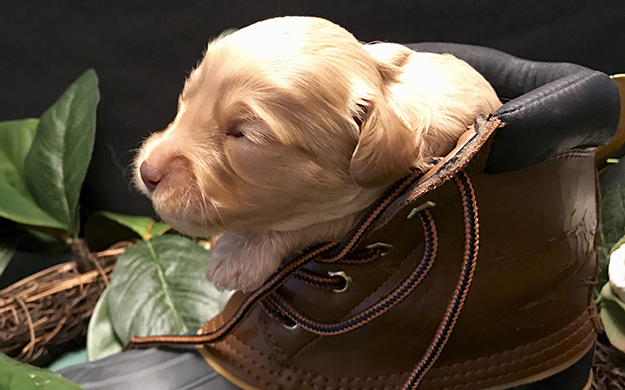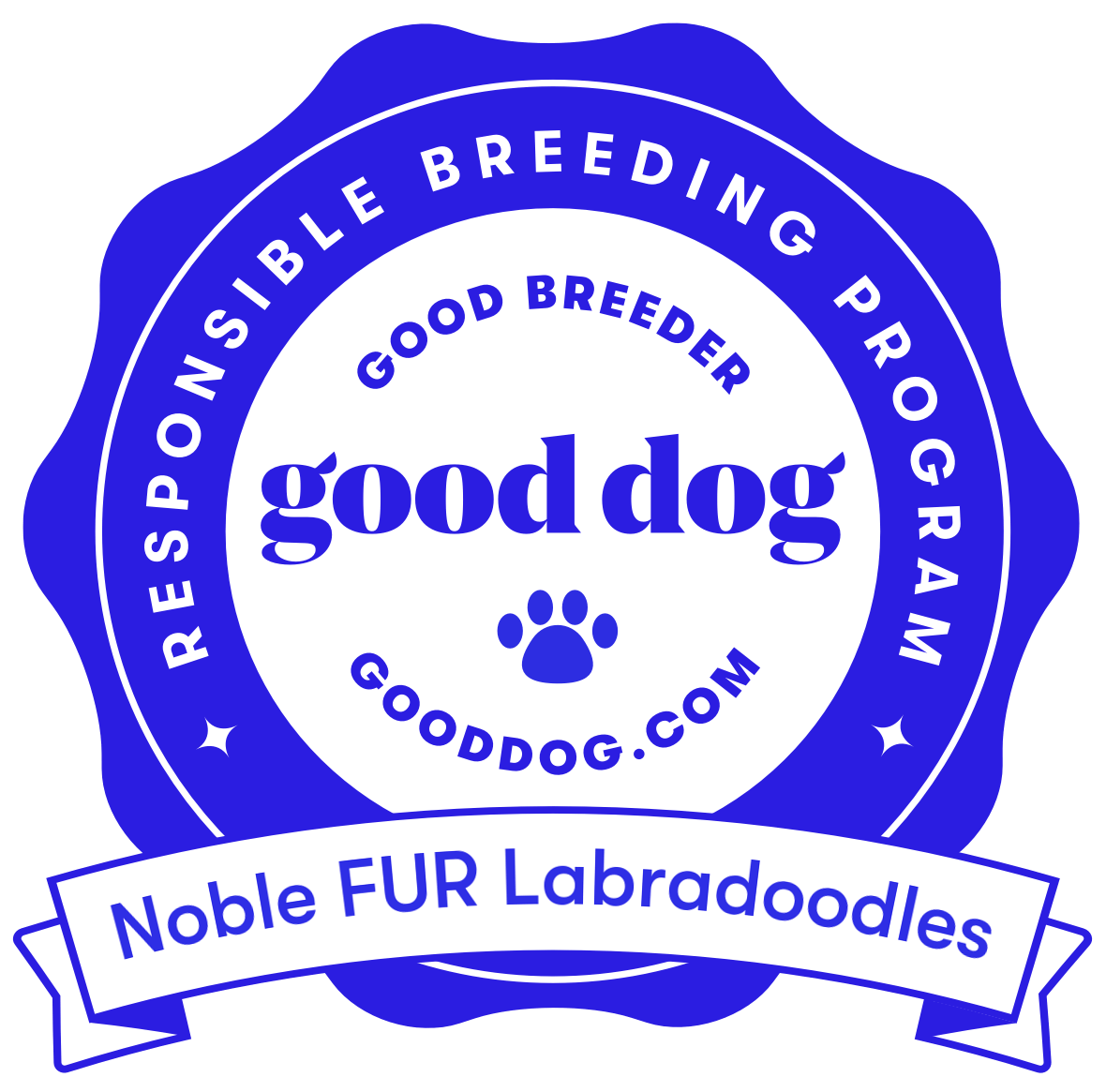The Beginning

In the late 1980s, Pat Blum, a vision-impaired female from Hawaii contacted The Guide Dog Association of Australia (GDAV) to inquire about an allergy friendly guide dog. Because of her husband’s allergies, Pat was hoping to get a guide dog that would not only serve her needs as a guide dog, but also be “allergy-friendly” for her husband. Wally Conron, the breeding manager for GDAV, bred the first intentional litter of Labradoodles. Harley, a poodle, and Brandy, a Labrador, produced three Labradoodle puppies. One puppy from the litter, Sultan, had an amazing temperament and trainable nature and thus made him a perfect companion and guide dog. The labradoodle breed is incredibly smart, trainable, and have wonderful temperaments. These attributes together with their hypersensitivity-friendly and light to non-shedding coats make the Australian Labradoodle an increasingly desirable puppy.


Because many of these dogs are used as service dogs and therapy dogs, breeders in Australia began breeding Labradoodles with the hope of producing puppies with consistent conformation, coat type, and temperament. Tegan Park and Rutland Manor, the two founders of the Australian Labradoodle, began carefully infusing several other breeds into early generations of their Labrador & Poodle crosses. The infused breeds included the English Cocker Spaniel or Cockapoo and the Irish Water Spaniel. The resulting Australian Labradoodles have been bred to each other, and are considered multi-generational Australian Labradoodles. Even when other types of Labradoodles are bred on for generations, the result is not an Australian Labradoodle, as the attributes of the infused breeds were not included in their ancestry.
Organizations have been formed to protect and promote the continued development of the Australian Labradoodle line. Noble FUR Labradoodles is a proud member of three registries dedicated to protecting the integrity of the breed: The Australian Labradoodle Club of America (ALCA), the Australian Labradoodle Association of America (ALAA), and the Worldwide Australian Labradoodle Association (WALA).
TEMPERAMENT/PERSONALITY
The Australian Labradoodle is highly intelligent and is easy to train. They are known for their cheerful disposition, sociability and intelligence. The Australian Labradoodle should be outgoing, but not aggressive and smart but not overly independent. They are friendly, loyal, eager to please, even tempered and gentle. It is this combination of traits that makes the Australian Labradoodle an outstanding choice for service and therapy dogs as well as a fantastic family companion. The Australian Labradoodle quickly learns standard obedience commands, such as sit, stay and come. The breed thrives on being mentally engaged; they are clever and love playing with other dogs, adults and children.


GENERATIONS
First Generation Labradoodle or F1 – The product of a Labrador Retriever crossed with a Poodle. Coats can be inconsistent; about 30% do NOT shed or shed very little. This cross is usually not desirable for families with allergies.
F1b Labradoodle or F1b – The result of crossing an F1 Labradoodle to a poodle. This combination creates a more consistent allergy-friendly coat. The success rate for a light to non shedding dog is much higher.
Australian Labradoodles – The result of crossing an Australian Labradoodle to an F1, F1b or Poodle, or crossing combination of a Labrador, Poodle and Cocker Spaniel. The result is considered an Australian Labradoodle and are typically allergy friendly.
Multigenerational Australian Labradoodle – The result of crossing an Australian Labradoodle to any other Australian Labradoodle. This cross is considered allergy friendly.
SIZE
The Labradoodle comes in three height categories. Determine size by measuring from the floor to the top of the shoulder.
Miniatures: 14″-16″ inches in height and 15-30 lbs in weight.
Mediums: 17″-20″ inches in height and 30-45 lbs in weight.
Standards: 21″-24″ inches in height and 45-65 lbs in weight.

Colors
Labradoodle colors can vary and include solid and parti-colors (more than one color). A pup may not retain his original puppy color, but may lighten with age or even darken.
CHALK / WHITE
White does not necessarily mean white. Shades can vary between white and cream when compared to a bright white.
CREAM / GOLD
This is richer in color than a chalk or white. The color ranges from just hints of gold to a deeper gold.
CHOCOLATE
This color can range from dark chocolate to milk chocolate. The chocolate color may stay a rich chocolate or fade over time.
CARAMEL
A caramel is an apricot or red with a liver nose and green eyes. A dark caramel can also be a challenging color to produce.
APRICOT
Visualize the fleshy part of a peach. Apricots can range from a light apricot to dark apricot. Some fade over time and some hold their color nicely.
BLACK
Unlike some of the other colors true blacks should retain its color. If there are any recessive genes in the line for silver or blue, the pup can fade to silver.
RED
A real red will be quite dark and red. Many mistake a dark apricot for a red. They can fade to an apricot, but others will retain their deep dark red. Red is one of the more challenging colors to produce.
Coats
Australian Labradoodles can have three types of coats.
FLEECE COAT
A wavy to curly coat that has the feel of silky angora. This is typically a non-shedding coat. The coat can be high maintenance during the transition from puppy to adult dog.
WOOL
Curly like a poodle, usually non-shedding and allergy friendly. A wool coat typically has a more cotton-like feel. The coat can be high maintenance if kept long. Clipping it shorter will cut down on the maintenance.
HAIR
Varies in thickness and length. Tends to be straight or slightly wavy. The coat is low maintenance. Compatibility with allergy sufferers varies considerably because some shed immensely, others minimally.










